April 22, 2025
Pollinator and Plant Partnership

Every day can be Earth Day in our habitat gardens, as we celebrate our wildlife on native or adapted plants. I was thrilled to be on the spot when this graceful white-lined sphinx moth dashed around my pink evening primrose. You can see why it’s commonly called a hummingbird moth!
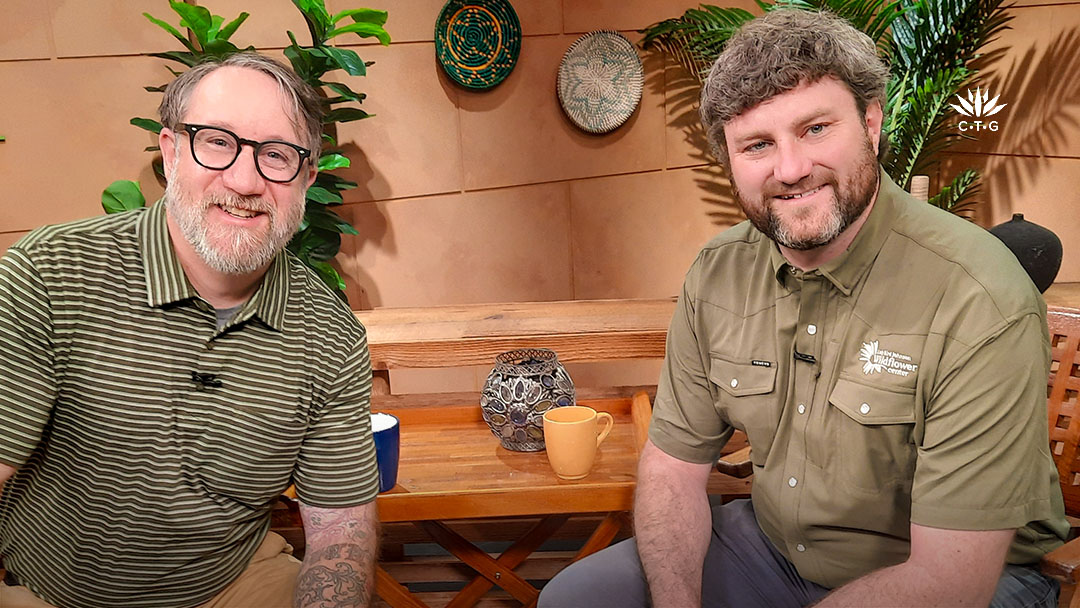
We often think of bees as pollinators, but moths are, too. “Some of the moths are better and actually, to some extent, it’s not understood how important moths are to pollination,” said Dr. Sean Griffin, Director of Science & Conservation at the Lady Bird Johnson Wildflower Center.” This week, he and John Hart explore how plants partner with pollinators of all kinds.
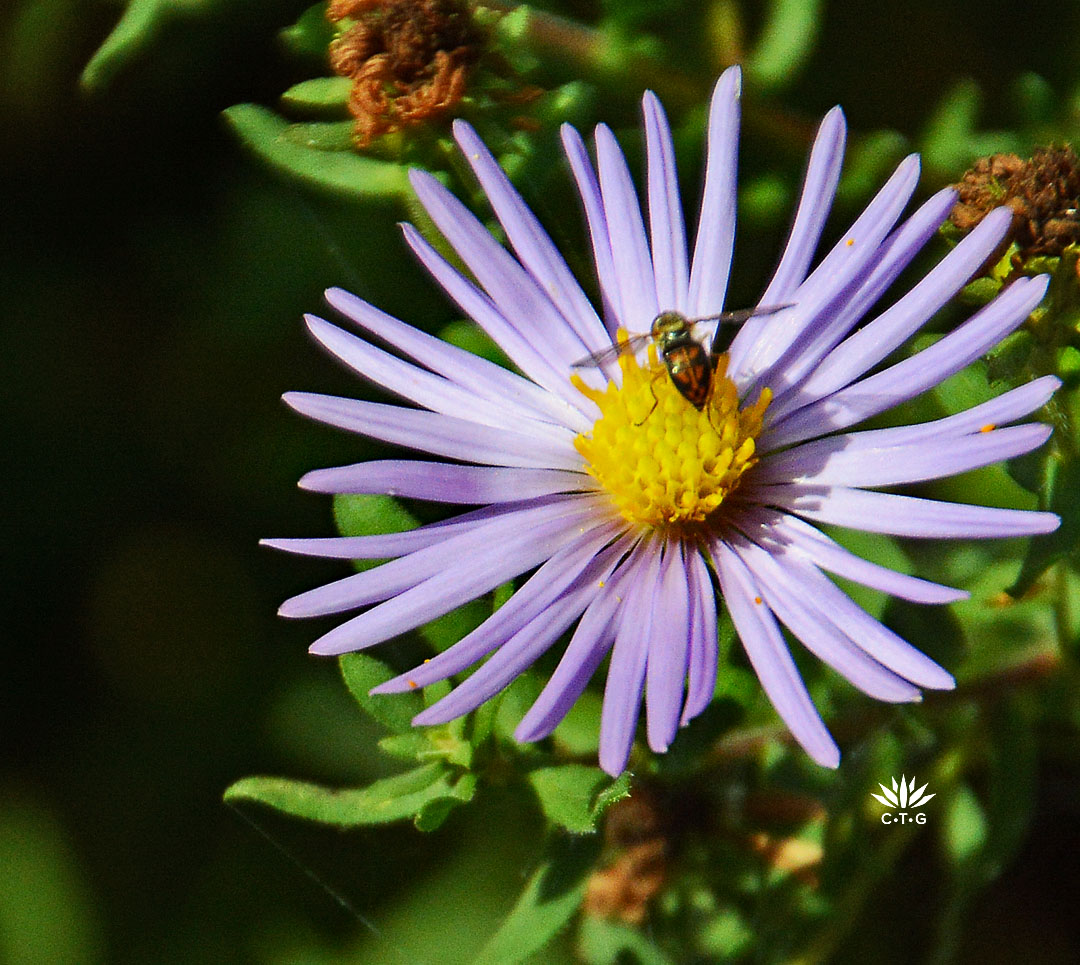
Flies are also valuable pollinators, including hoverfly (syrphid fly), commonly called flower flies. Keep an eagle eye out for these tiny fliers, like this one on fall aster in my garden.
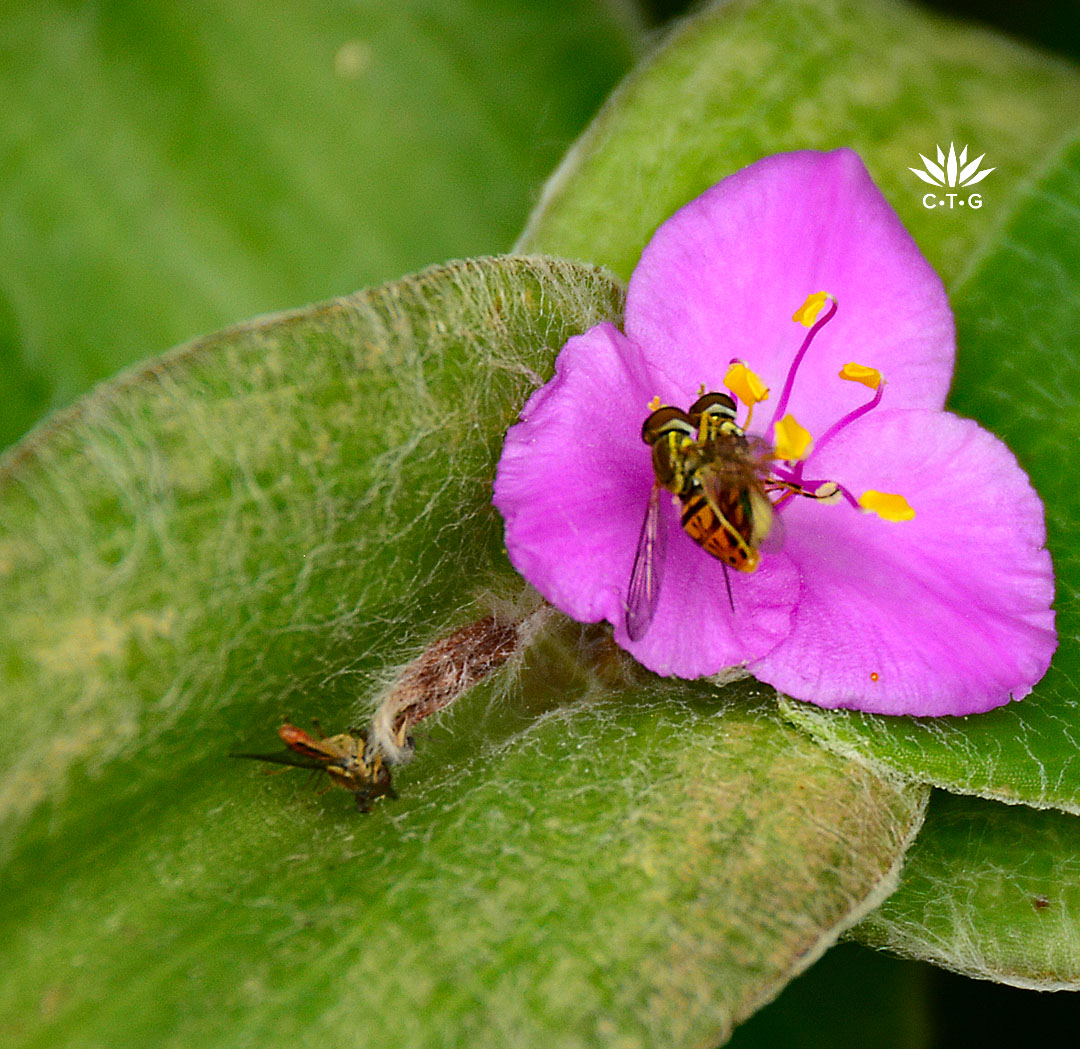
Sometimes they’re confused with tiny bees (I sure do!). A loving couple snuggled on this cobweb spiderwort.
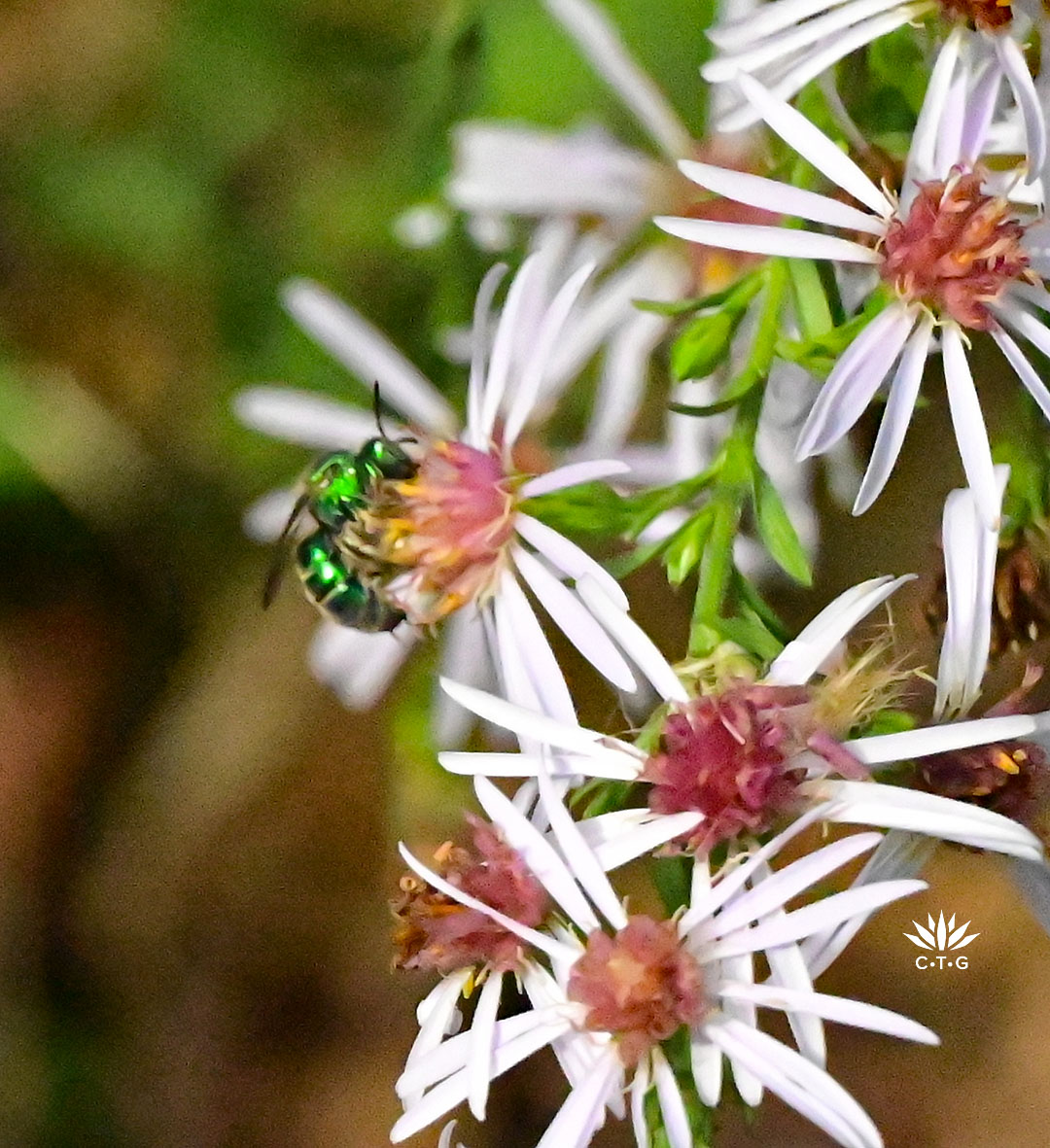
Sparkling green sweat bees frolic on my flowers spring and fall. This one favored native Drummond’s aster that lazy afternoon. These are solitary bees, meaning that they live and raise their offspring independently instead of in colonies like honey bees.
“Texas has some of the highest native bee diversity in the country,” Sean also tells us. “I think one of the highest diversities even in the world. We have over a thousand species just in Texas. And a lot of these are highly specialized. Some of them will only come out for short periods of time. And working in a place with this kind of bee diversity is really motivating because we really want to protect these really interesting species.”
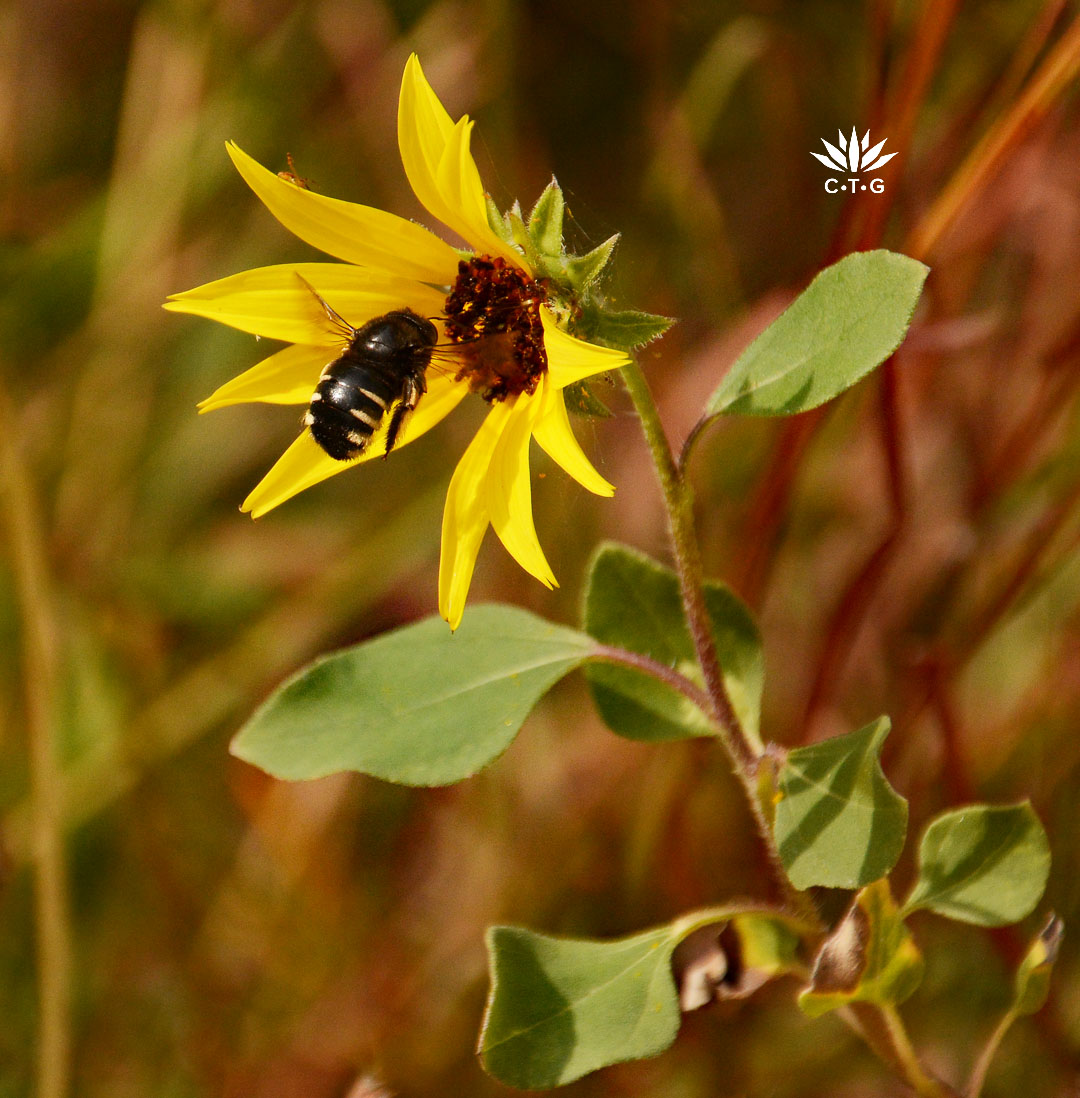
“But bumble bees, especially in Central Texas, are one of our most important bees for pollination of native plants,” Sean adds. “And so a lot of plants are adapted specifically to these bees as one of the most important pollinators in the system. Another thing about bumble bees is that they require large amounts of habitat in order to survive. So some of the other solitary bees, like sweat bees, may not need as much habitat in order to thrive. But bumble bees need an acre or more of good habitat in order to survive. And so this means that in the city, you’ll actually see areas that may not have enough habitat to support them and you won’t see the bumble bees.”
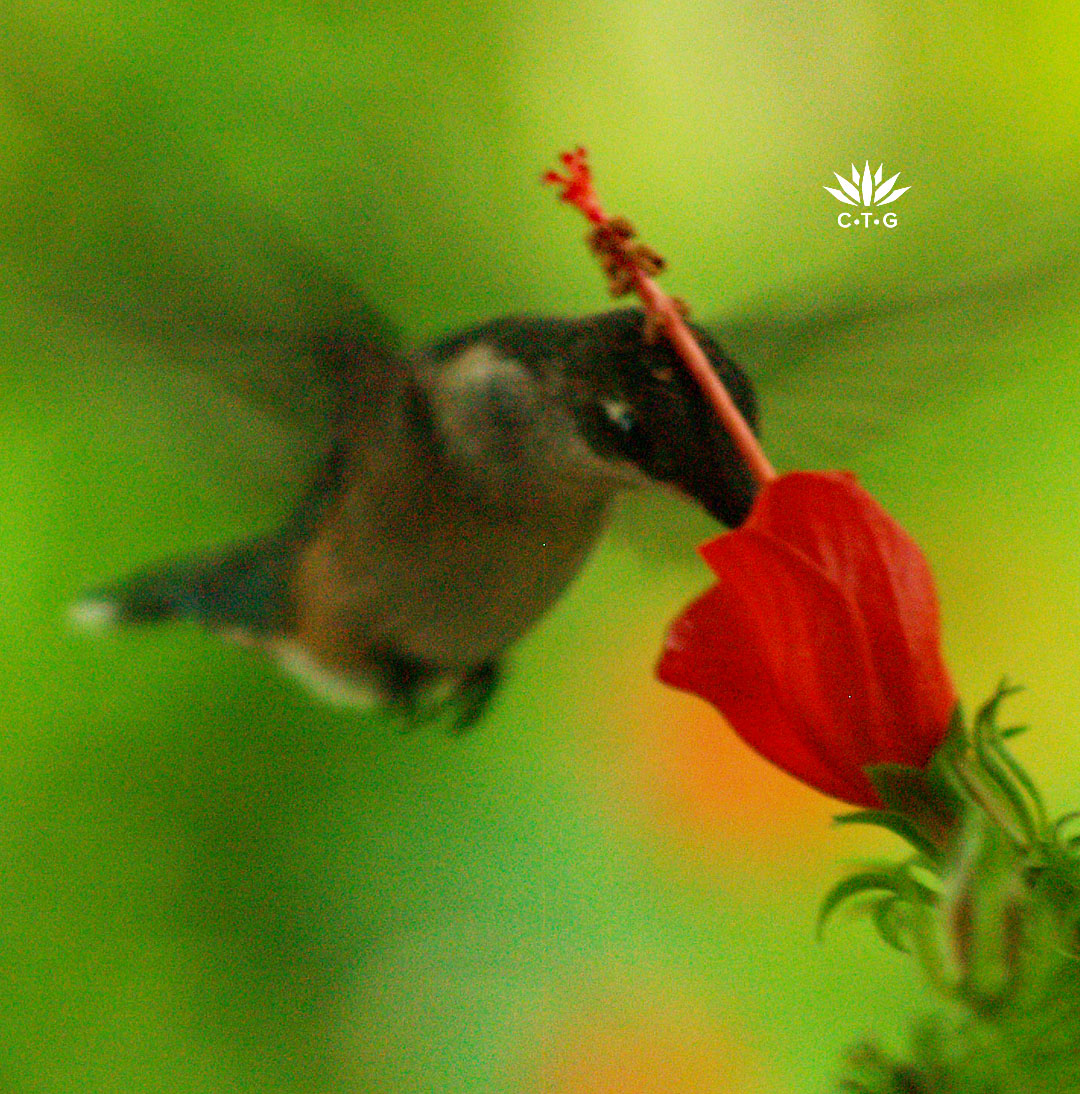
Of course, actual hummingbirds (as opposed to hummingbird MOTHS) pollinate, too! If you’ve got native Turk’s cap, hummingbirds are sure to find you.
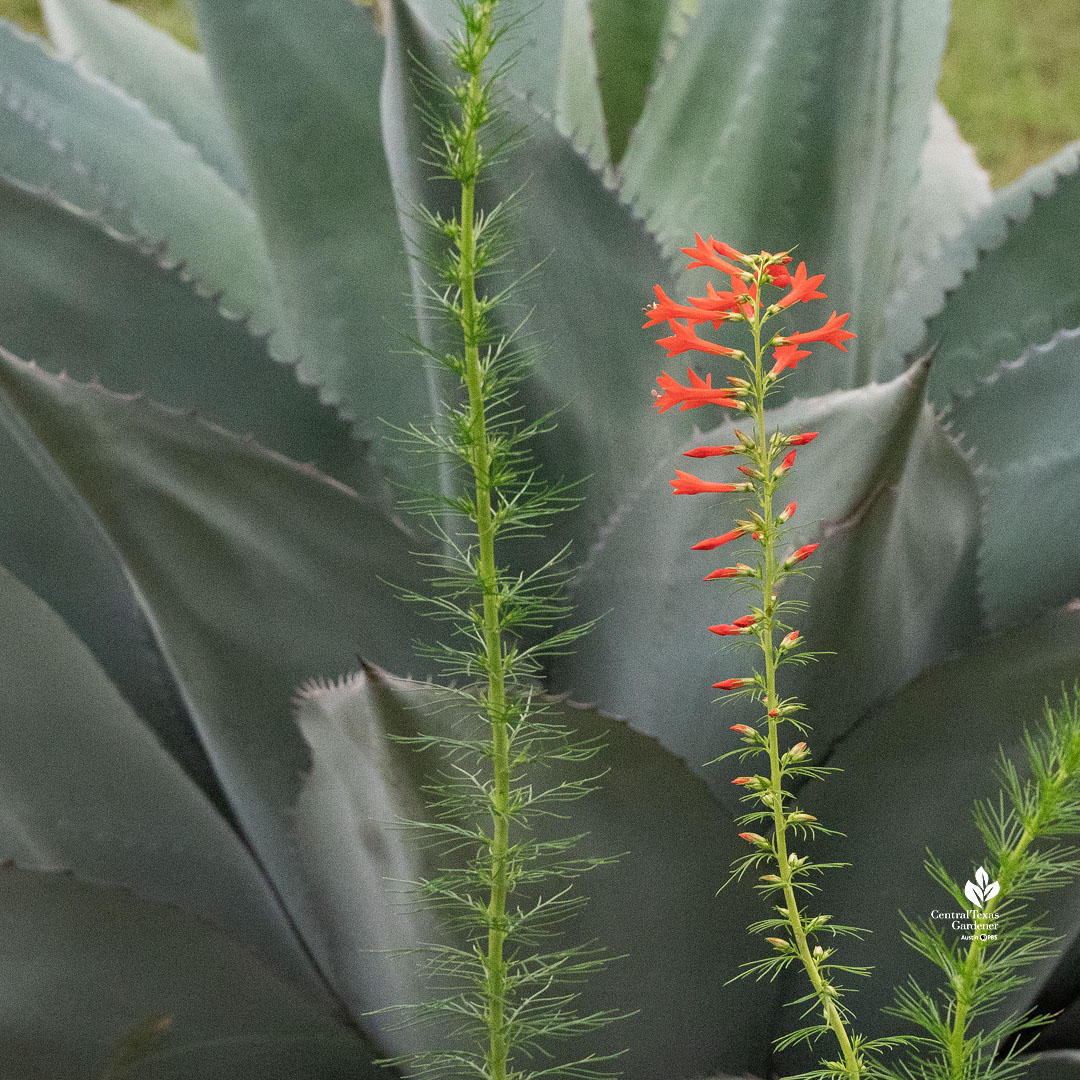
A hummingbird’s needle-like beak tucks nicely into enticing red tubular flowers on standing cypress, a native warm weather annual in Doug and Ann Garrett’s garden.
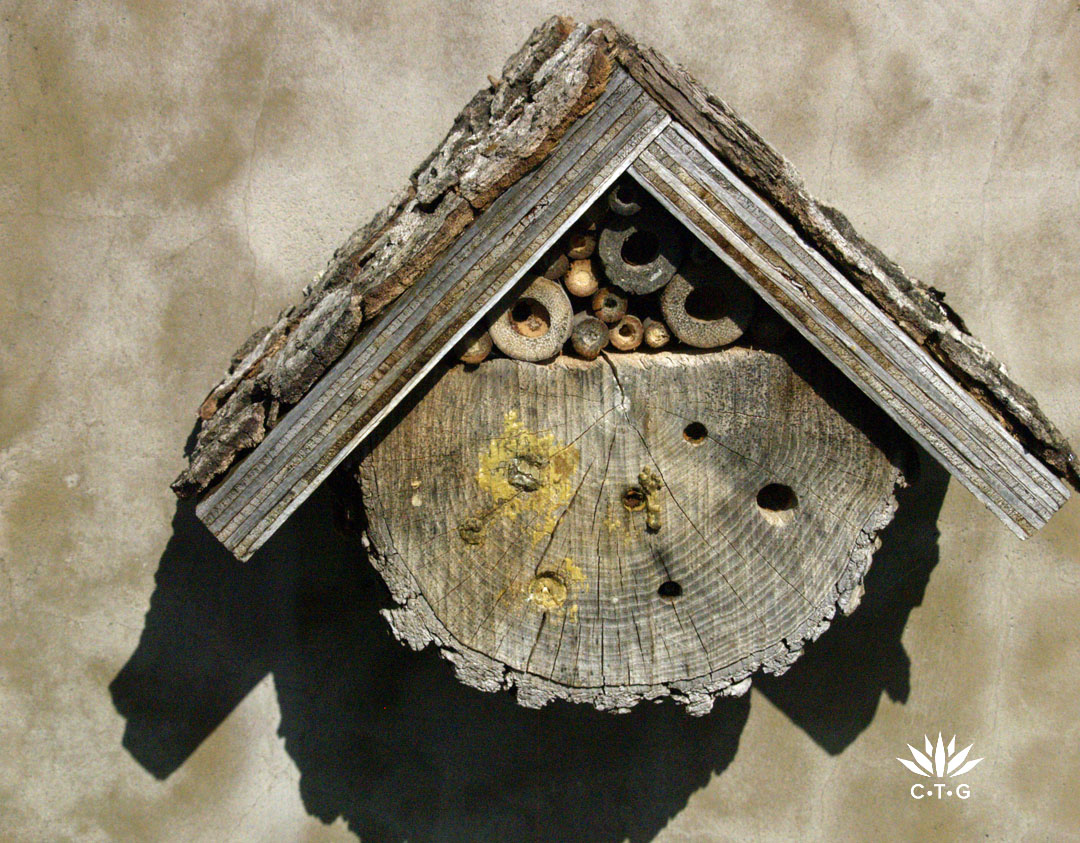
Bee hotels for solitary bees or not? Sean’s take: “If you have those in your yard, you have those in your community, it’s creating nesting resources that may not exist otherwise. So that’s really important. But if you leave them out for long periods of time, they can build up disease and parasite loads. And so that means that it’s important to regularly, maybe every year or two, switch out the materials in those bee hotels.”
Get The Xerces Society’s tips to create nests for native bees.
Check out the Wildflower Center’s Plant Collection for Pollinators.
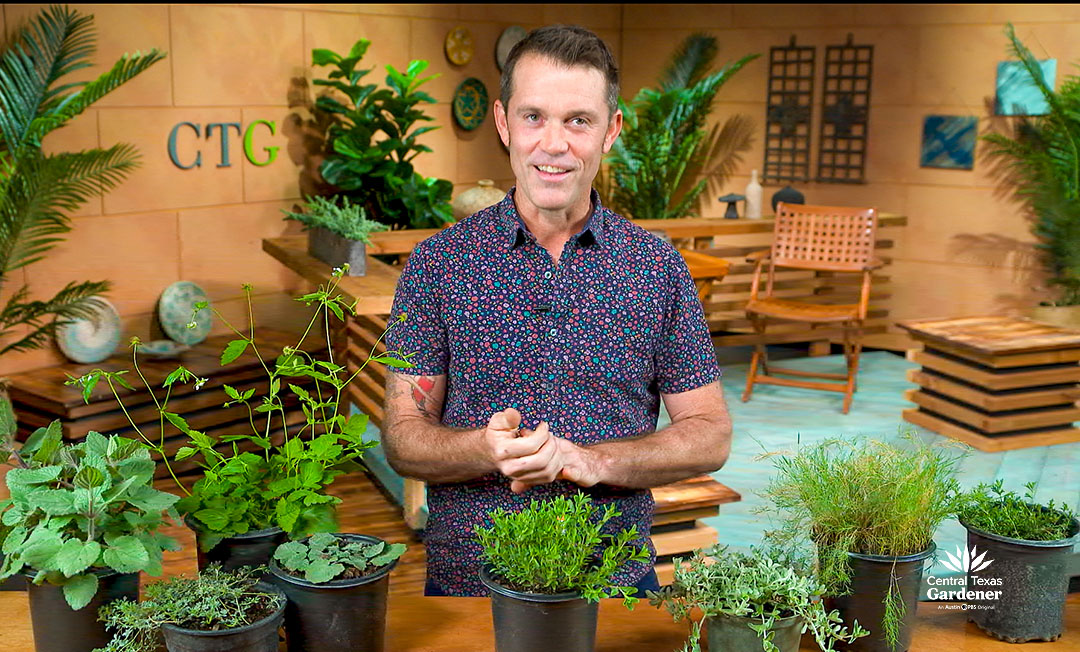
On Backyard Basics, we are thrilled to welcome back William Glenn who opened his new nursery, Greensleeves Nursery, a few days after our February taping. And such great news, too, since he filled the nursery vacancy when Green ‘n Growing in Pflugerville closed last October.
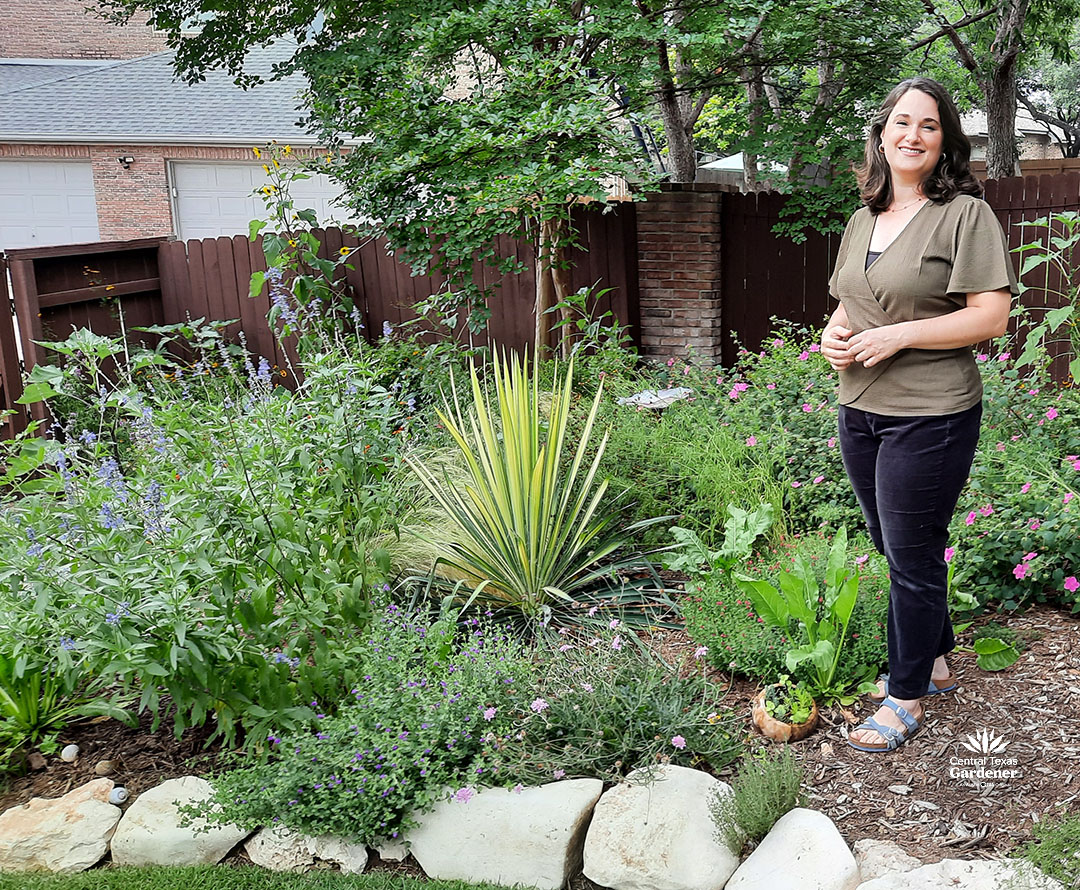
At Greensleeves, William puts the focus on native plants. Since viewers always ask about native groundcovers, he picked a handful for sun or part shade. Purple skullcap is one selection, here with mealy blue sage and ‘Color Guard’ yucca in Alexa Volpe’s garden.
Get William’s plant list.
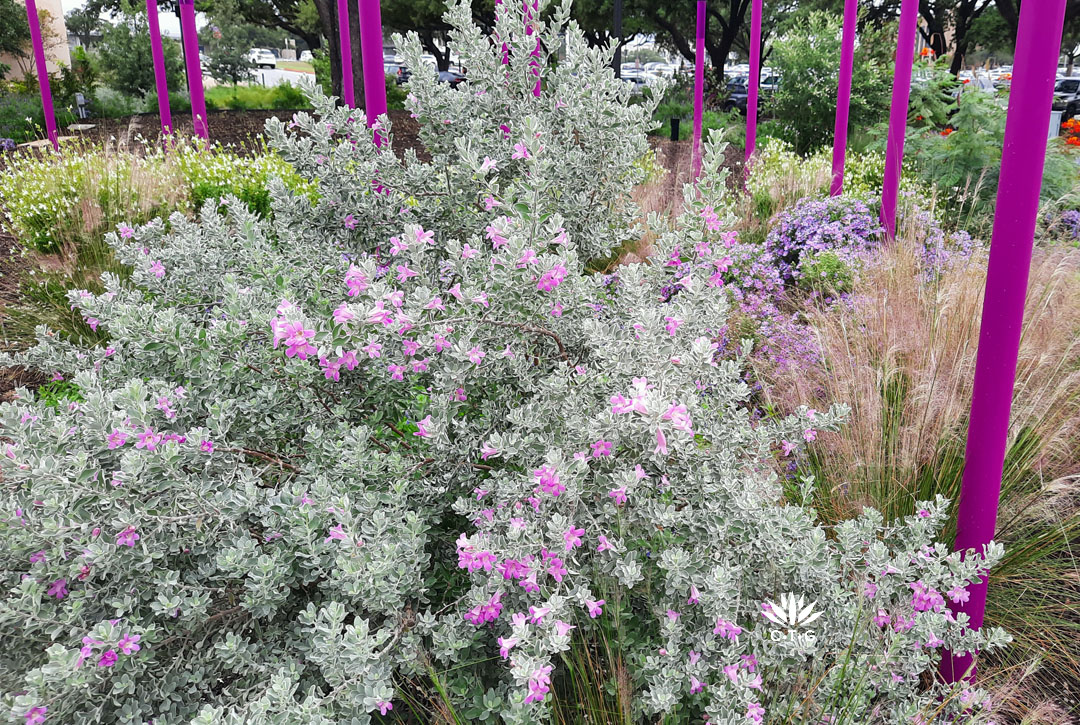
Lots of pollinators flock to the pink to lavender flowers on Texas sage, aka cenizo.
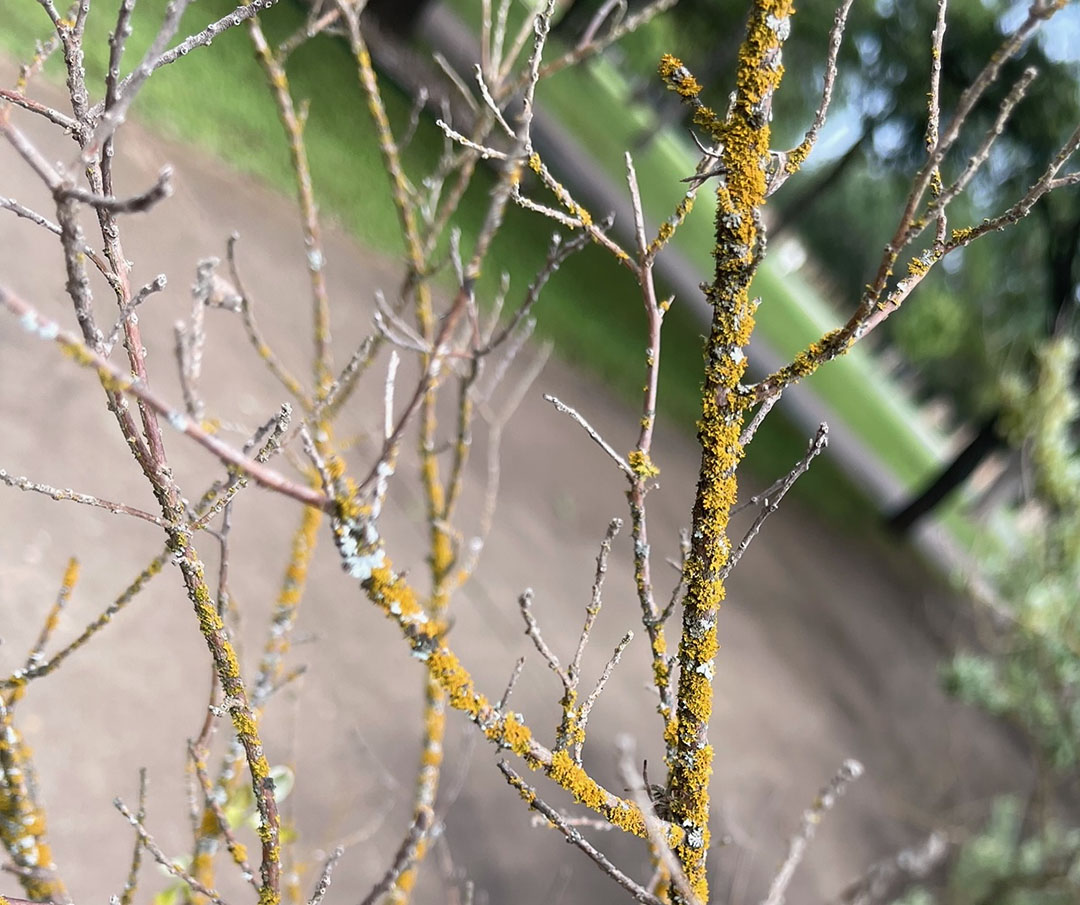
But, Kirsten Ueber wants to know what this yellow growth is on her cenizo. Daphne tells us, “This infestation appears to be a very large colony of lichen, and the best course of action is to prune out all of the dead areas caused by it. Unfortunately, the lichen infestation is emblematic of a wider long-term problem. Lichens tend to grow in cool, moist, shady conditions, and the only way to completely control the population on these infested cenizos would be to completely change the environment. Texas sages are xeric, sun-loving shrubs that thrive in heat, so they’ll continue to be stressed in this moist, shady situation, making them susceptible to lichen, fungi, and environmental issues.”
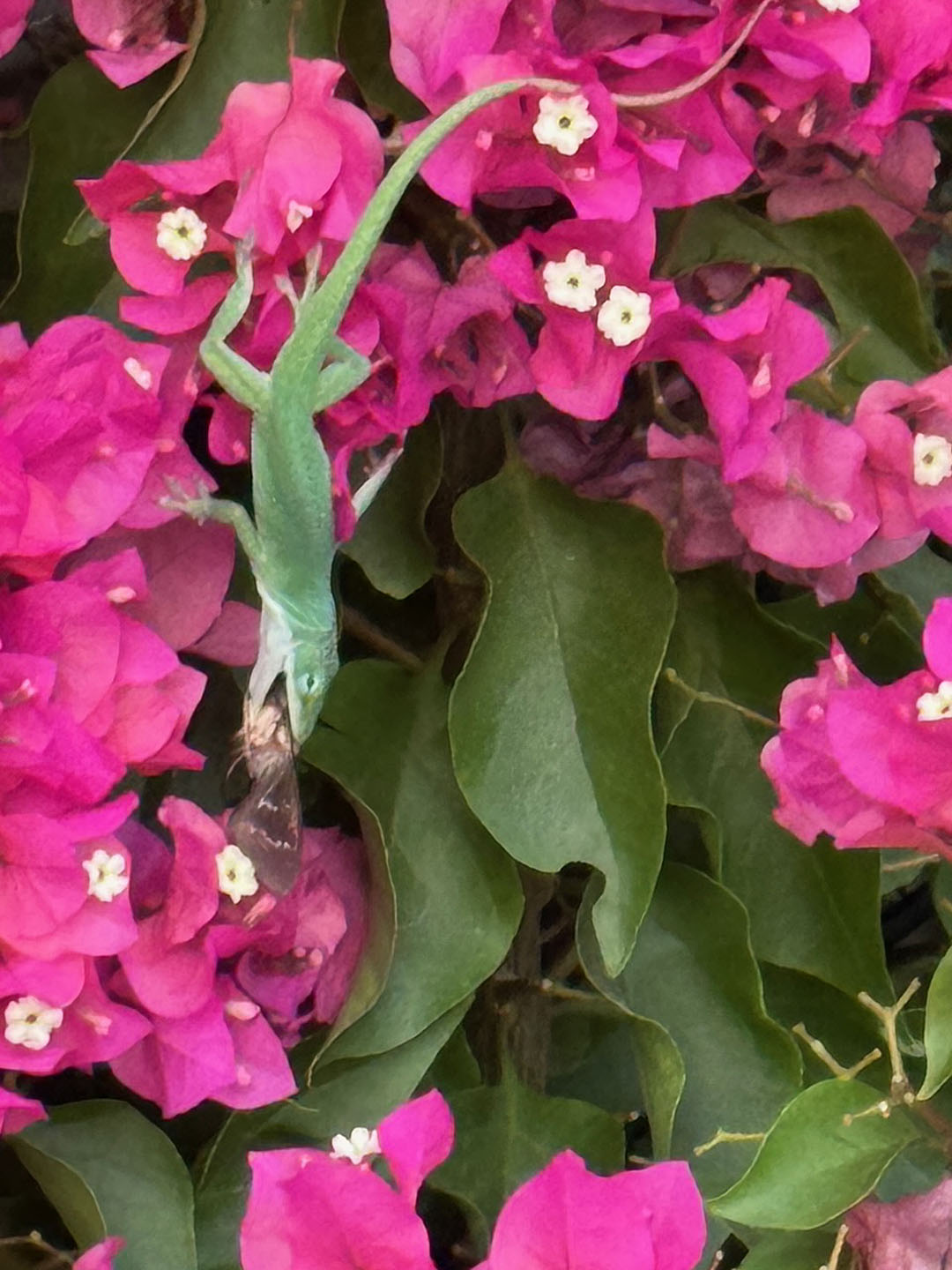
And, we might not think of bougainvilleas as pollinator plants, but some insects definitely go for them. On a neighborhood walk, Joe Limon happened to catch this anole that jumped out to nab a meal.

On tour at Ann and Doug Garrett’s home in Jarrell, wildlife graze four acres of native plant gardens on former Blackland Prairie ranchland.
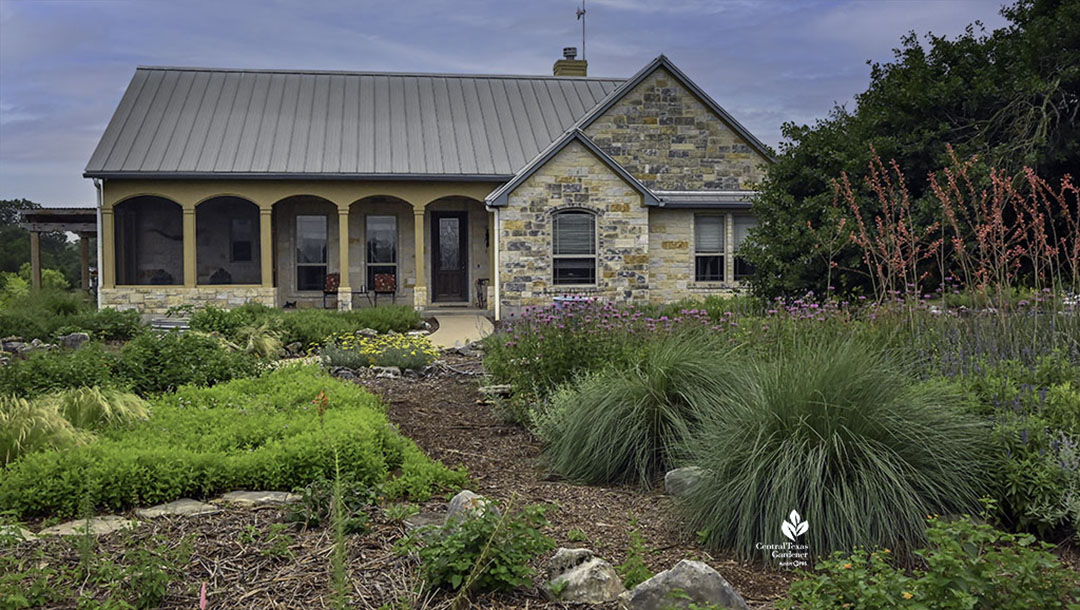
“We call it the three B ranch: the bird, bee, and butterfly paradise. And that’s what we’ve worked to do,” Doug told us in May 2024. We missed the bluebonnets and other early spring bloomers and the summer-to-fall sensations. Still, we scrambled to see even a fraction of the May floral kaleidoscope.
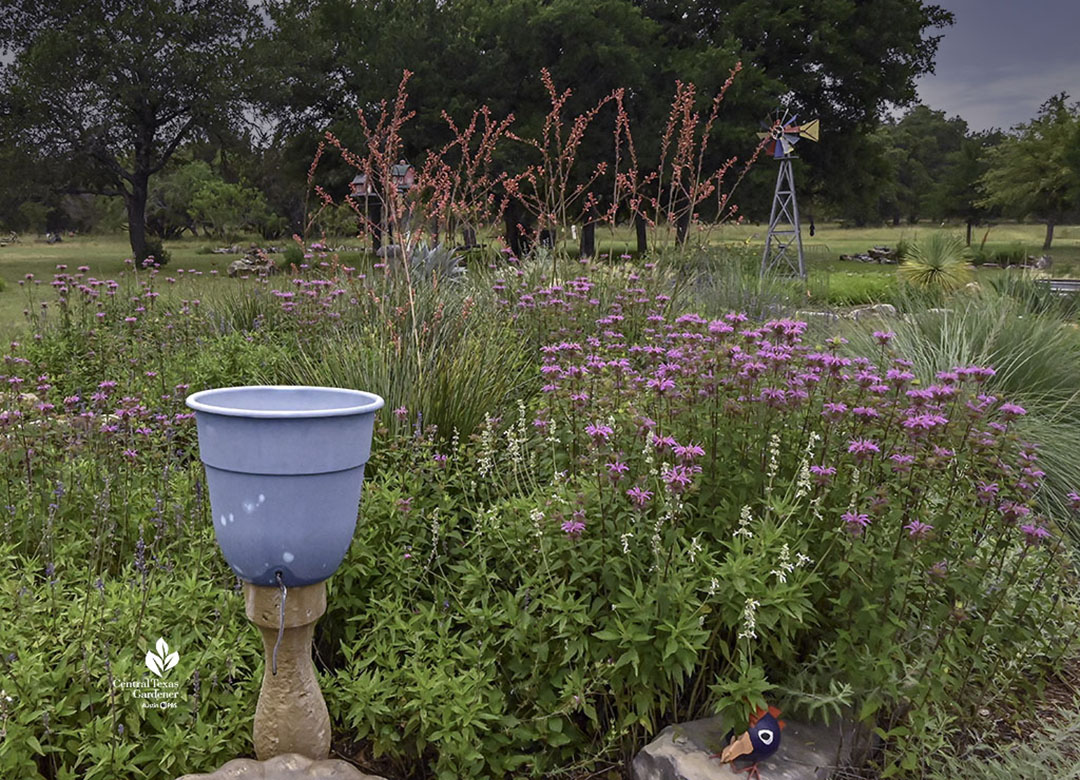
Doug and Ann experimented to come up with plants that go along with clay, rock, and little to no irrigation. If a plant lives, but isn’t especially happy, it seeds itself to a more amicable spot. The Garretts are delighted to let plants make design decisions, freeing them up to just enjoy the wildlife visitors. Read more and watch our visit.
Thank you for stopping by! Next week, let’s light up the night with fireflies!
tags:

